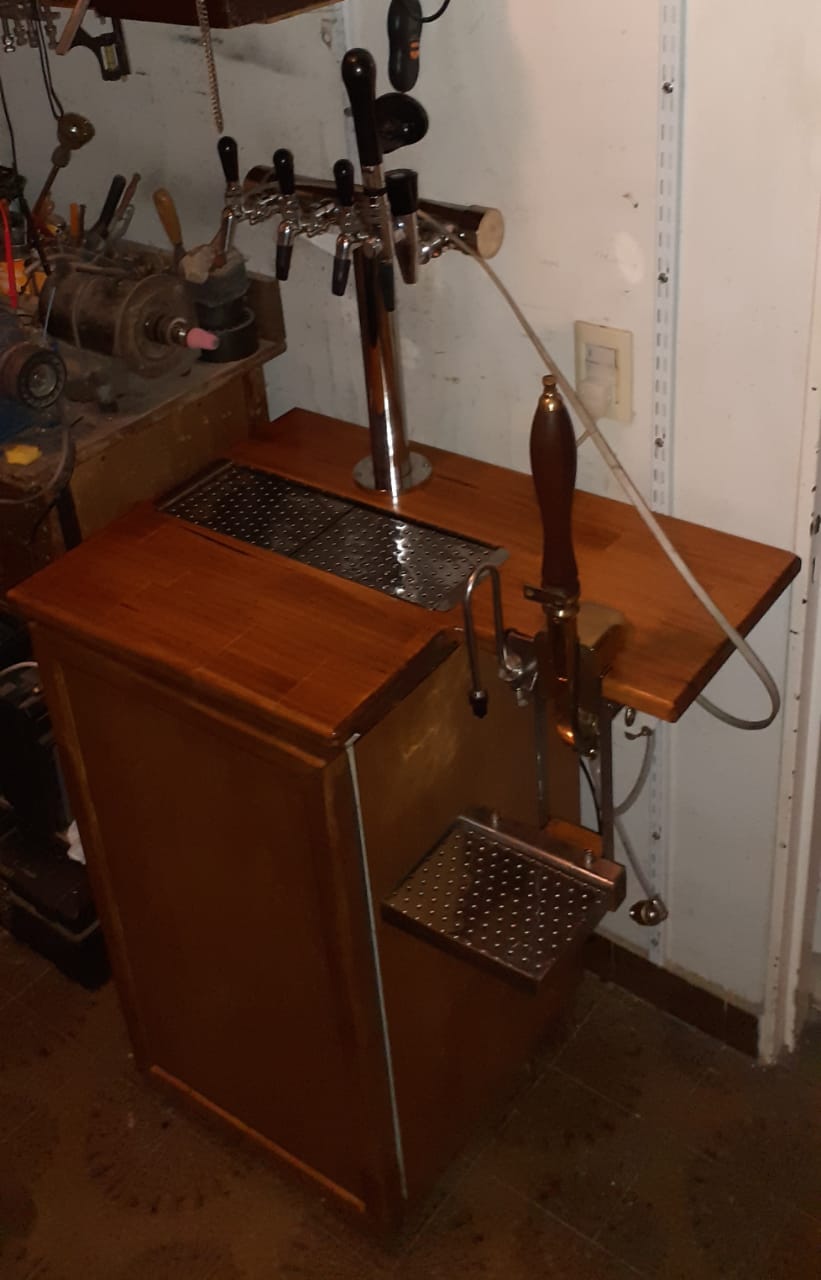Jonathan Daniel
Member
- Joined
- Jul 10, 2018
- Messages
- 8
- Reaction score
- 0
So I have a Whirlpool mini fridge that i'm going to convert into a single keg kegerator. The obstacle i have to get around now is figuring out where the cooling lines run if i want to drill a hole in the roof and mount a single tap tower to the top of the fridge. That is looking like it's going to be much more difficult to do, as there's not a seam on the fridge casing to pull off and easily see where they run. I read one article about mixing cornstarch and alcohol and spreading it across the top of the fridge, setting to the coldest and in about 20 min there will be a reaction that will show me where the lines are...I may still try that,
BUT
I was also thinking it would be monumentally simpler to just drill through the door (no cooling lines there) and mount the tap handles horizontally there.
My question to you all of you is, is there a benefit to one versus the other, door vs tower? Other than looks, of course, and, i suppose, convenience for your hands when reaching to operate the tap?
If there's no real benefit then i may go with the path of least resistance, despite already having a single tap tower (i have another kegerator in the house that i'm upgrading to a 2 tap tower, so i'll have the single tap tower as a spare).
Thoughts?
BUT
I was also thinking it would be monumentally simpler to just drill through the door (no cooling lines there) and mount the tap handles horizontally there.
My question to you all of you is, is there a benefit to one versus the other, door vs tower? Other than looks, of course, and, i suppose, convenience for your hands when reaching to operate the tap?
If there's no real benefit then i may go with the path of least resistance, despite already having a single tap tower (i have another kegerator in the house that i'm upgrading to a 2 tap tower, so i'll have the single tap tower as a spare).
Thoughts?















































![Craft A Brew - Safale S-04 Dry Yeast - Fermentis - English Ale Dry Yeast - For English and American Ales and Hard Apple Ciders - Ingredients for Home Brewing - Beer Making Supplies - [1 Pack]](https://m.media-amazon.com/images/I/41fVGNh6JfL._SL500_.jpg)









